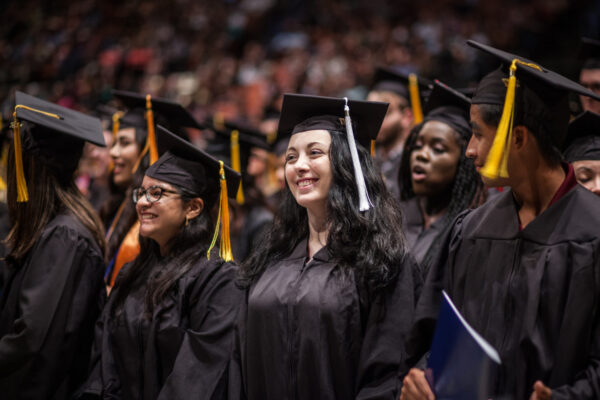The Impact College Closures Have on Student Success
Title: A Dream Derailed? Investigating the Causal Effects of College Closure on Student Outcomes.
Authors: Rachel Burns, Ellen Bryer, Kelsey Heckert, Dustin Weeden, and Lynneah Brown
Source: State Higher Education Executive Officers Association
The State Higher Education Executive Officers Association (SHEEO) has released the second of three reports as part of a research collaboration between SHEEO and the National Student Clearinghouse Research Center.
The second report focuses on measuring the impact of college closures on student enrollment and completion and identifies state policies to support affected students. The first report provided an analysis of students who experienced closure, tracking their enrollment and credentials over time. The second report expands on this, estimating closure effects using a comparison group. A third report will consider state policies’ impact on mitigating closure effects.
Key findings from the second report include:
- There is a negative correlation between college closure and student outcomes.
- Students who experienced a closure are less likely than students who did not experience a closure to continue enrollment, with the largest enrollment gap between groups occurring one month after closure took place.
- Reenrollment likelihood varies by student demographics and academic characteristics, with students of color, male students, and students in certificate programs facing lower reenrollment rates.
- Closure reduces the likelihood of credential completion by almost half for students with no prior credential.
- Completion rates after closure vary by student demographics and academic characteristics, with students of color, male students, and older students facing lower completion rates.
- Students enrolled in associate and bachelor’s degree programs at the time of closure have higher completion rates compared to students in certificate programs.
- Completion rates also vary based on institutional characteristics, with private for-profit two-year institutions having lower completion rates compared to public two-year institutions.
The second report recommends the following policy changes:
- Simplify transfer process: State agencies and institutions should make it easier for students who experience closure to transfer and continue their education without disruptions.
- Provide additional student support: Offer services like transfer counseling, orientation, academic advising, and tutoring to assist students who reenroll following a closure.
- Use an equity lens: States and institutions should acknowledge the disproportionate impact of closure on students of color, older students, and those in sub-baccalaureate degree programs.
- Require contingency plans: State authorization policies should mandate that institutions have contingency plans in place to address potential closures.
- Ensure capacity and resources: States must ensure that authorization offices have the necessary resources and capacity to support students in case of closure.
- Examine branch-to-branch transfers and ensure quality criteria: Thoroughly review transfers between branch institutions after closure and establish pathways for students to enroll in institutions that have strong accreditation history and financial stability.
To explore findings and methodological information about the report and survey, click here.
—Alexandria M. Falzarano
If you have any questions or comments about this blog post, please contact us.


